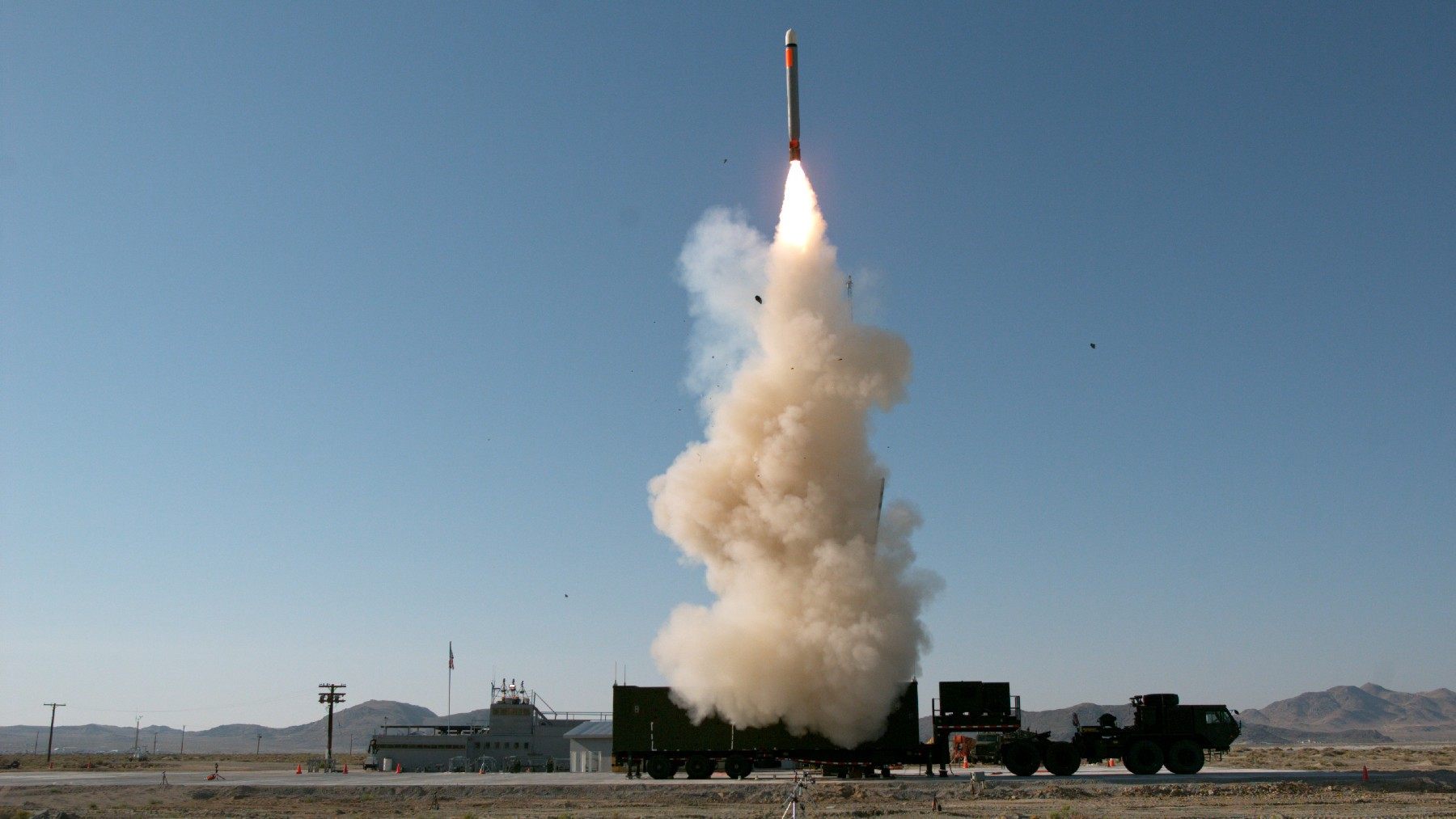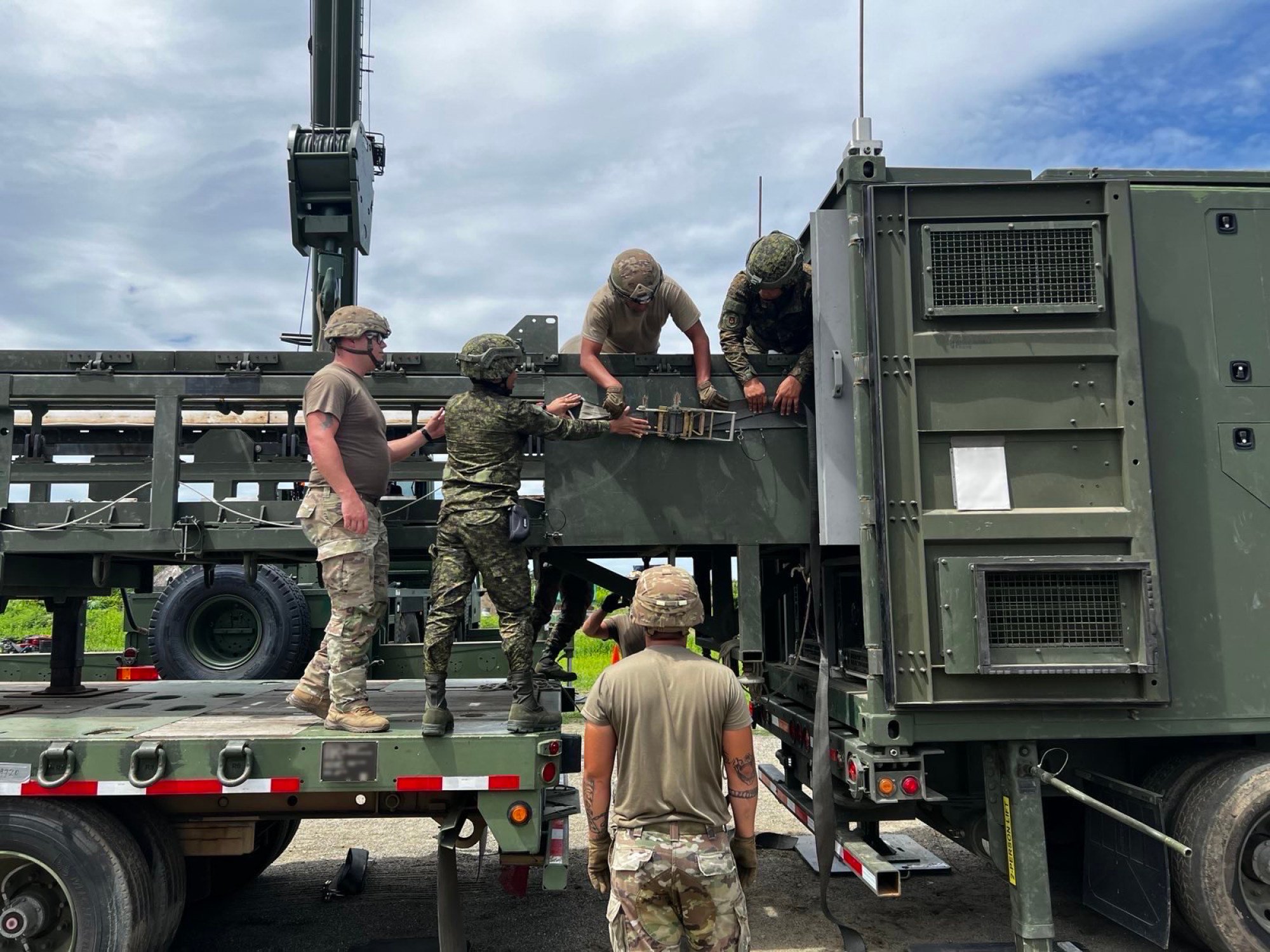Philippines says more US Typhon missiles ‘very welcome’ despite China’s warnings
Army spokesman says more of the advanced missile launchers would accelerate training as regional tensions simmer

The Philippine army has signalled it would welcome additional US Typhon missile systems to accelerate troop training and strengthen deterrence, despite Beijing‘s repeated denunciations of the system as a destabilising force that risks fuelling tensions in the South China Sea.
Speaking at a press briefing on Tuesday, Philippine Army spokesman Colonel Louie Dema‑ala said the arrival of more Typhon launchers, which are also known as Medium Range Capability (MRC) systems, would “be very welcome” because training on the advanced weapons system has been limited to only a few personnel thus far.
“Yes, any additional deployment of the MRC is very welcome to the Philippine Army as this will help us and fast track our training when it comes to new capabilities,” he told reporters.
He stressed, however, that no official decision had yet been made on any new deployment.
The first Typhon system arrived in the Philippines in April 2024 during joint US-Philippine exercises, marking its first overseas deployment. The ground-based launcher, capable of firing Tomahawk and SM-6 missiles with ranges of up to 2,000 kilometres, puts parts of the South China Sea, Taiwan Strait and even southern China within striking distance. The system remains stationed in northern Luzon for ongoing training.

The possibility of the Philippines’ receiving more Typhon systems was first raised last month during a visit by foreign journalists to the US Indo-Pacific Command (IndoPacom) headquarters in Hawaii under Washington’s Friends, Partners, Allies Programme for Journalists.
An IndoPacom official, who was authorised to discuss the matter but not named, told the reporters that any further deployments would require Manila’s consent. “If the Philippine government agrees to it, I would say the answer is yes. If they say no, thanks, then the answer will be no,” the official was quoted as saying by the Philippine Star.
Philippine Army chief Lieutenant General Roy Galido has previously expressed strong interest in acquiring the system on a permanent basis, stating last December that the Typhon was “planned to be acquired because we see its feasibility and its functionality in our concept of archipelagic defence implementation.”
His remarks prompted a sharp rebuke from China’s foreign ministry spokeswoman, Mao Ning, who called the potential move provocative and dangerous, branding the Typhon an offensive weapon that enables Washington to project first-strike power near Chinese shores. She urged Manila to “correct its wrongdoing” to avoid fuelling an arms race and destabilising Southeast Asia.
Despite Beijing’s objections, Galido said last week that acquiring the Typhon, or a comparable system, was “still our desire” given the positive results from the training already conducted.
In addition to the Typhon, the US military has also deployed the Navy-Marine Expeditionary Ship Interdiction System (NMESIS) to the Philippines, following its use in the recent Balikatan joint exercises held from April to May.
The NMESIS remains in the country for training purposes, according to Philippine Navy public affairs director Captain John Percie Alcos.
“This is to confirm that the Navy-Marine Expeditionary Ship Interdiction System is still within the country and it will continue to be used by the Philippine Marine Corps for training purposes,” Alcos said last week. “We are still learning, we’re still training … you just don’t learn it one time. You have to be well-versed with the equipment.”
With a strike range of up to 100 nautical miles, the NMESIS is designed to counter amphibious assaults and maritime raids. Alcos said the system serves as a deterrent against those “who intend to conduct illegal, coercive, aggressive and deceptive actions against the Philippines”.

Competing flashpoints
The discussion over a possible expanded Typhon deployment comes as Washington repositions some of its forces, including the withdrawal of the USS Nimitz carrier strike group from the Philippine Sea to the Middle East, amid simultaneous tensions in both regions.
The Nimitz was redeployed amid the escalating tensions involving Iran, Israel and Gulf states, joining the USS Carl Vinson, which had earlier conducted joint exercises with the Philippine Navy.
Asked by This Week in Asia whether the redeployment of the US carrier group would affect Manila’s maritime security posture, Philippine navy spokesman Rear Admiral Roy Vincent Trinidad said it would have “no effect on Philippine maritime security in the West Philippine Sea.”
He added that the Philippines continued to “strengthen alliances with like-minded nations” while pursuing a strategy of self-reliance.
Philippine Air Force spokeswoman Colonel Margreth Padilla said the military’s modernisation efforts remain on track, pointing to the US$700 million deal for 12 FA-50 Block 70 light combat aircraft from Korea Aerospace Industries. The procurement, which falls under Horizon 3 of the Armed Forces of the Philippines Modernisation Programme, is scheduled for delivery through 2030.
According to Defence Department Assistant Secretary Arsenio Andolong, the new aircraft will feature “advanced avionics, modern radar systems, and extended operational range.”
Meanwhile, the BRP Miguel Malvar, the Philippine Navy’s only vessel with anti-submarine warfare capabilities, recently conducted its first joint anti-submarine exercise with the Japanese destroyer JS Takanami to improve interoperability between the two forces.
A Philippine journalist embedded with the exercise reported that two Chinese naval vessels closely monitored the drills. When one Chinese vessel launched an underwater drone, the Japanese destroyer responded by launching its own.
Asked about the status of the Japanese drone, Trinidad said operational details were left to commanders on the ground.
Trinidad also said China’s Southern Theatre Command typically avoids direct interference during such joint drills but frequently resorts to disinformation afterwards.
“They mention coordinated air and sea patrol … we did not monitor any such coordinated air and sea patrol [during the June 15 joint exercise with Japan]. What we monitored was their continued illegal presence,” he said, referring to the West Philippine Sea, Manila’s term for parts of the South China Sea that Manila considers part of its maritime territory.